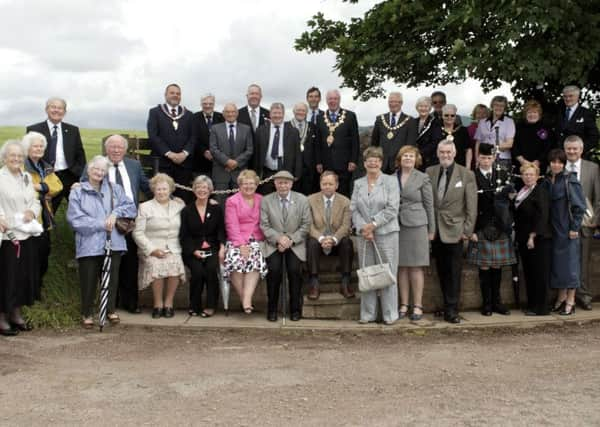What parts of Clydesdale did Robert Burns visit?


However, this is, after all, Scotland, a land where the National Hobby is disagreement AND the poet in question is the National Bard.
In England for centuries now there have been countless inns and stately homes which proudly sport a plaque of doubtful historic accuracy, claiming “Queen Elizabeth the First Slept Here.”
Advertisement
Hide AdAdvertisement
Hide AdIn Scotland we’ve our own version of this tourist-attracting wishful thinking and it usually involves Robert Burns not only sleeping a night at any given premises but also inscribing a few lines of poetry on a window there.
Lanark is just one of scores of places around the land where the Bard is supposed to have carried out this act of literary vandalism, reportedly in what was then the Royal Burgh’s official hostel on the Westport, roughly opposite The Clydesdale Inn. The Gazette consulted Lanarkshire’s recognised expert on the Bard and World Burns Federation press officer Murdo Morrison to ask if there was any truth to this local legend.
Murdo said: “Frankly, no-one alive knows whether it is true or not. It isn’t actually documented anywhere but that doesn’t mean it didn’t happen.”
He DID confirm that Burns stayed at The Crook Inn outside Broughton and probably wrote Willie Wassel’s Tale there, based on an old story he’d picked up travelling through nearby Moffat.
Advertisement
Hide AdAdvertisement
Hide AdThere were, according to Murdo, three other visits to our area by Burns.
In late February 1789 he called at the Kirk of Lamington where the Bard cheekily commented on the lack of heating, inscribing - yes, on a window - the lines:
“As cauld a wind as ever blew
A cauld kirk and in’t but few
As cauld a minster’s ever spak Ye’se a be het or I come back.”
He is known to have stayed at Carnwath’s Wee Bush Inn, probably stopping off during a journey on horseback on the Lang Whang, then, as now, a major route between Clydesdale and Edinburgh.
Advertisement
Hide AdAdvertisement
Hide AdPerhaps the most famous foray into our area was his overnight stay at Covington Mains Farm on November 27, 1786, an occasion celebrated by a small memorial stone there, recently refurbished, which is the scene of an annual wreath-laying by members of the Lanarkshire Burns Federation.